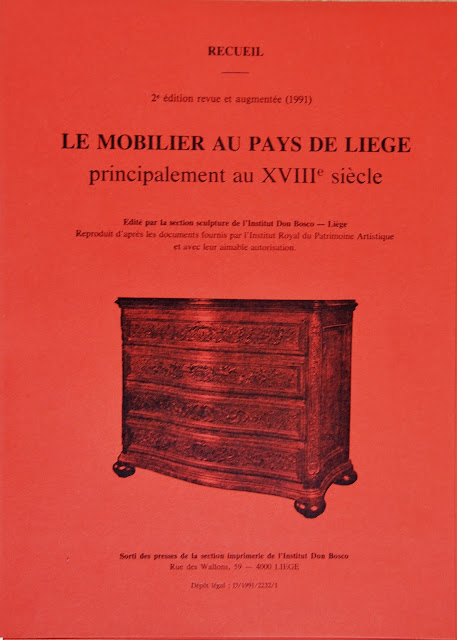 |
| The application of wood carving on Barley Twist furniture legs |
Patrick Damiaens
Ornamental Woodcarver
Classic Barley Twist legs
Ornamental Woodcarver
Classic Barley Twist legs
decorated with Ornaments
Application of a flower and leaf motif on Barley Twist turned legs.
The twisted shape of table or chair legs are
characteristic of the French Louis XIII style.
In this context the word “twisted” or “torsion” refers
to the spiral shaped twists that are applied to wood, which make it seem as if
the timber is distorted, slightly resembling a thick rope. It is possible to
apply intricate wood carving on the larger examples of twisted furniture legs,
usually in the hollow part of the twist.
The French Louis XIII style is a relatively unknown
furniture trend, and one rarely runs into furniture from this era (1610-1650)
at the local antique dealer. Instead these type of antiques are often found in
French museums. In general, the Louis XIII type furniture may be considered as
a transition style between the late Renaissance and Baroque.
Nevertheless, in a relatively short period of only 4
decades (1610-1650), this early 17th century furniture style
underwent several significant changes.
The cabinet was introduced. At the time this type of
furniture was specifically designed to flaunt the wealth and importance of its
owners. The many drawers and secret storage spaces in the interior of the
cabinet were meant to display, store or sometimes hide exotic objects from
various remote parts of the world, entirely for the purpose of social
positioning.
Precious woods, like for instance ebony, were sawn in
thin slices of approximately 4 mm in thickness, and were subsequently glued to
the massive wooden frame of the furniture piece. The plate material we know
today was not developed until several centuries later. Interestingly, at the
guild of master carpenters a new specialty was introduced, namely the “Menuisiers
en ébéne”, or ebony carpenters, who later on were simply referred to as
ébénistes. This is a name we use until this day (an ébénist is a
joiner or cabinet-maker).
The most recognizable feature of the Louis XIII style
is undoubtedly the twisted shape of the furniture legs. In this particular
period the demand for qualified wood turners was high, as the use of twisted
furniture legs was extremely fashionable; a “fad” which probably originated in
Spain or Portugal.
This “twisted pattern” was also adopted in
architecture, for instance on stone columns. Today it is still possible to
admire the exquisite craftsmanship of these stone cutters.
Presented below are the various stages of carving a
decorative ornament on twisted wood turning.
The application of wood carving on Barley Twist turned legs
 |
| Twisted furniture legs |
 |
| The application of the drawing on the twisted legs |
 |
| shaping the ornaments |
 |
| a more detailed drawing is created |
 |
| the proper cutting of the flower and leaf motive |
 |
| Patrick Damiaens, Classic BARLEY TWIST legs decorated with woodcarving and ornaments |
 |
| finishing the leaf and flower motif |
________________________________________________
______________________________________
 |
| https://www.patrickdamiaens.info |



























